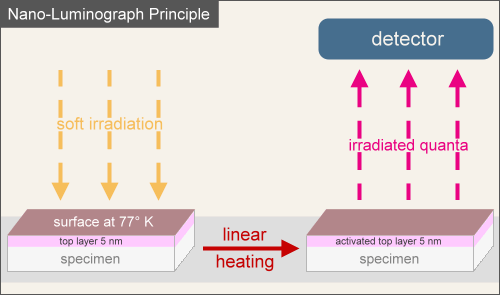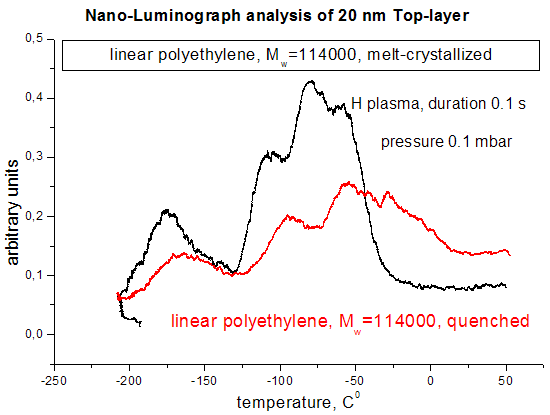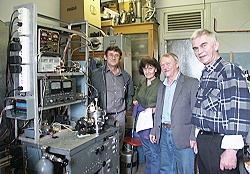Running Projects
Nano-Luminograph
We are glad to present the new opportunity to measure temperature transitions in top surface layers ("DSC-like" analysis) using the novel method realised in Nano-Luminograph.
It is an excellent opportunity if you are not planning to invest in purchase of Nano-Luminograph, but still want to obtain unique information about thin surface layers and get the substantial knowledge about your system.
Standard sample dimensions |
Ca. 20 x 20 mm free-standing film or film / coating on metal foil (in the latter case please provide also the uncoated foil sample for reference). |
Thickness of analyzed layer |
From 5 nm to 5 µm, defined by a customer. |
Temperature range |
Standard range from -196°C (-321 °F) to 100°C (212 °F) (optionally measurements can be done till 350°C (662 °F). |
Price |
One standard measurement (Luminogram) 120,- Euro |
The standard measurement is done by activation of the analysed surface by low-temperature plasma. As an option, the activation can be made by electron beam or atomic hydrogen beam.
Nano-Luminograph is recently developed method for analysis of physical structure and molecular packing of surface top-layers with depth resolution ca. 5 nm.
Additionally, it can be applied for investigation of surface defects of different surfaces and as its modification can be used as industrial defectoscope (surface quality control).
Method brings unique, earlier not available information about surface nano-layers.
Technology
The specimen (film, particles, micro- or nano-structured sample) is placed onto holder and deeply cooled down (optionally up to liquid nitrogen or liquid helium temperature (Fig.1). After short soft activation of surface layer by irradiation (low temperature plasma, atomic, ion or e-beam) the specimen is linearly heated.

Active sites, accumulated in surface layer at different morphology zones (e.g. crystallites, polymeric lamellae, different non-crystallized molecular packages) are deactivated (recombined) when the temperature approaches "Melting point" of given molecular movement. Recombination is accompanied by irradiation of luminescent quanta which are registered as a signal. The result is the spectrum: Luminescence intensity vs. Temperature, i.e. temperature transition spectra of material (Fig.2).

Each peak corresponds to certain molecular package zone in analyzed surface. The area of peak reflects the concentration of given structure elements in surface layer. Comparison of resulted spectrum with data base of temperature transitions in different materials one can reveal full physical structure and defects of the surface.
 This method is useful for any academic or industrial laboratory involved in investigation of surface, ultra-thin films, coatings, micro- and nano-structured assemblies and particles etc. It can be easy adopted for industrial surface quality control.
This method is useful for any academic or industrial laboratory involved in investigation of surface, ultra-thin films, coatings, micro- and nano-structured assemblies and particles etc. It can be easy adopted for industrial surface quality control.
Alternatively, the Nano-Luminograph can be used for investigation of surface physical-chemical processes (e.g. reactions of active species on the surface) and to study the interaction of irradiation (e.g. glow discharge) with solid state.
 Status quo
Status quo
First laboratory prototype is built up. The project is at stage of design and construction of commercial serial unit.
Intellectual property is protected by 2 granted national patents and by 2 submitted international PCT applications.
